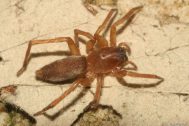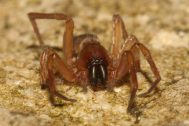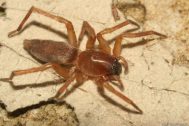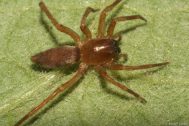| Czech name | zápředník horský |
|---|
| Threat level | Not endangered |
|---|
| Records | 72 nálezů, 14 kvadrátů |
|---|
| First record |
1875, C. Fickert, Fickert 1875
|
|---|
| Last record |
2023
, Filip Trnka |
|---|
| Distribution area | Palaearctic - E-T, ME |
|---|
| Phytogeographic area | - Oreo (Preference: Vysoká)
- Oreofytikum. Oblast extrazonální horské vegetace a květeny, tedy oblast klimaxových smrčin a vyšších horských poloh. Uměle odlesněné plochy jsou přeměněny na louky a pastviny.
|
|---|
| Původnost stanovišť | - climax (Preference: Vysoká)
- Klimaxová stanoviště, která jsou minimálně narušena činností člověka: původní horská stanoviště, původní a přirozené lesy, mokřady, rašeliniště, skalní stepi a lesostepi, váté písky, kamenité sutě, skály apod.
|
|---|
| Humidity | - semi-humid
- Mírně vlhká. Louky, stanoviště nad horní hranicí lesa, křoviny, listnaté lesy mesofytika, bučiny, kulturní smrčiny.
|
|---|
| Stratum | - Ground layer (Preference: Vysoká)
- Půdní povrch. Půdní povrch, prostory pod kameny, prostory v detritu a mechu.
|
|---|
| Osvětlení stanovišť | - open (Preference: Vysoká)
- Většinou bez vegetace či s nízkou vegetací, kde osvětlení zasahuje až k půdnímu povrchu: holé skály a sutě, štěrkové lavice, stěny budov, písčiny, skalní stepi, kosené louky, pole, vřesoviště, stanoviště nad horní hranicí lesa, rašeliniště.
|
|---|
| Hojnost výskytu | - rare
- Vzácný. Druh vyskytující se na malém počtu mapových polí, většinou pouze v omezené oblasti. Vzácné jsou například druhy vyskytující se pouze v horských oblastech nebo druhy žijící pouze v nejteplejších oblastech České republiky
|
|---|
| Altitude | 250-1550 |
|---|











